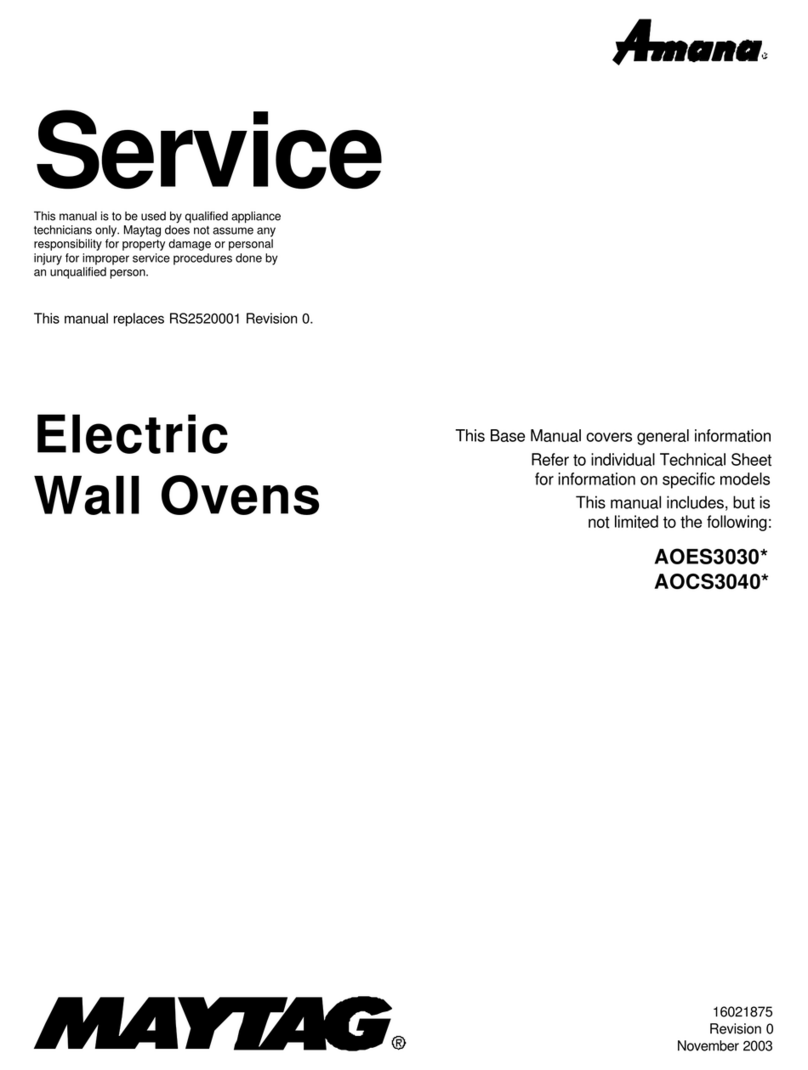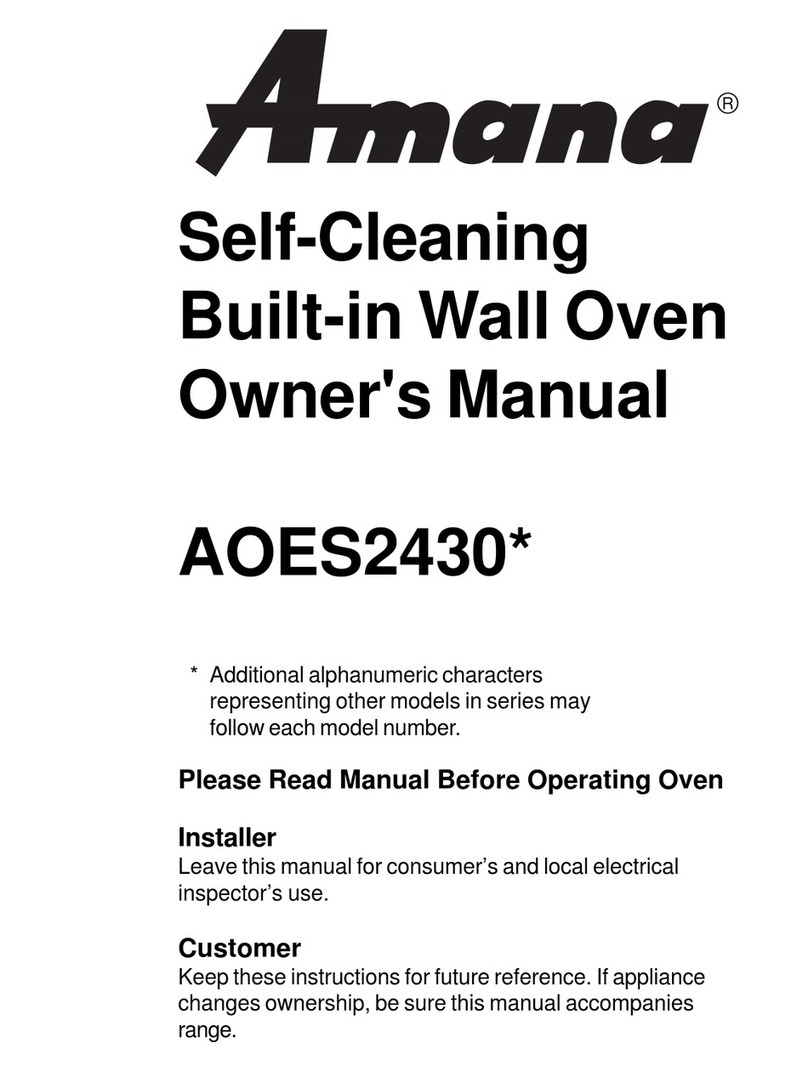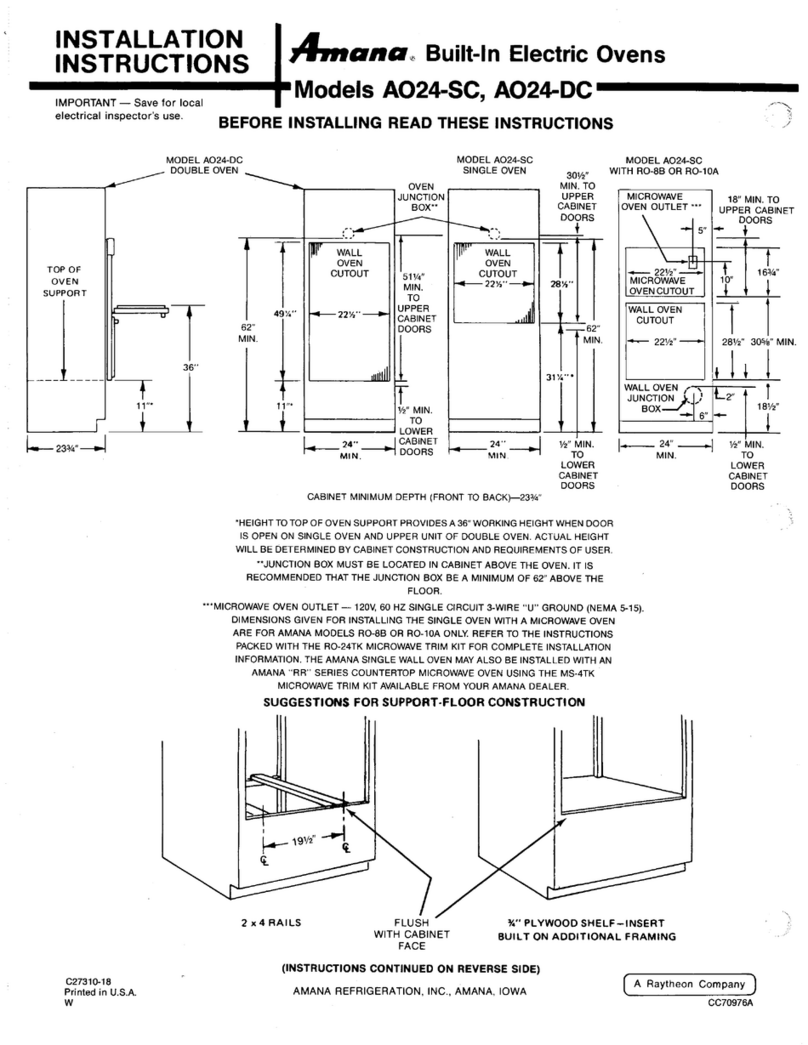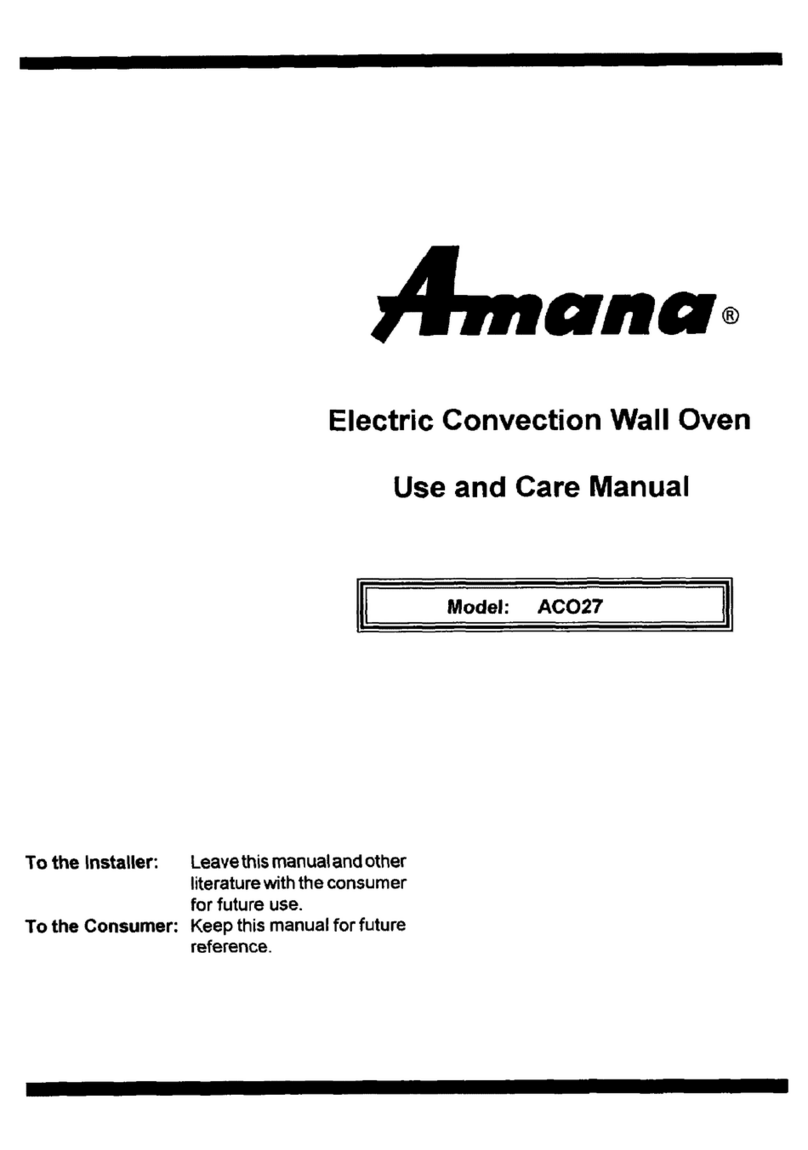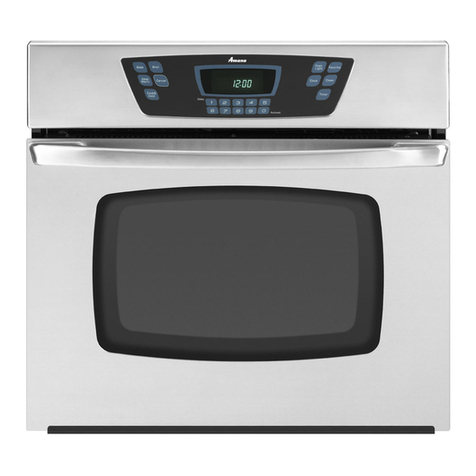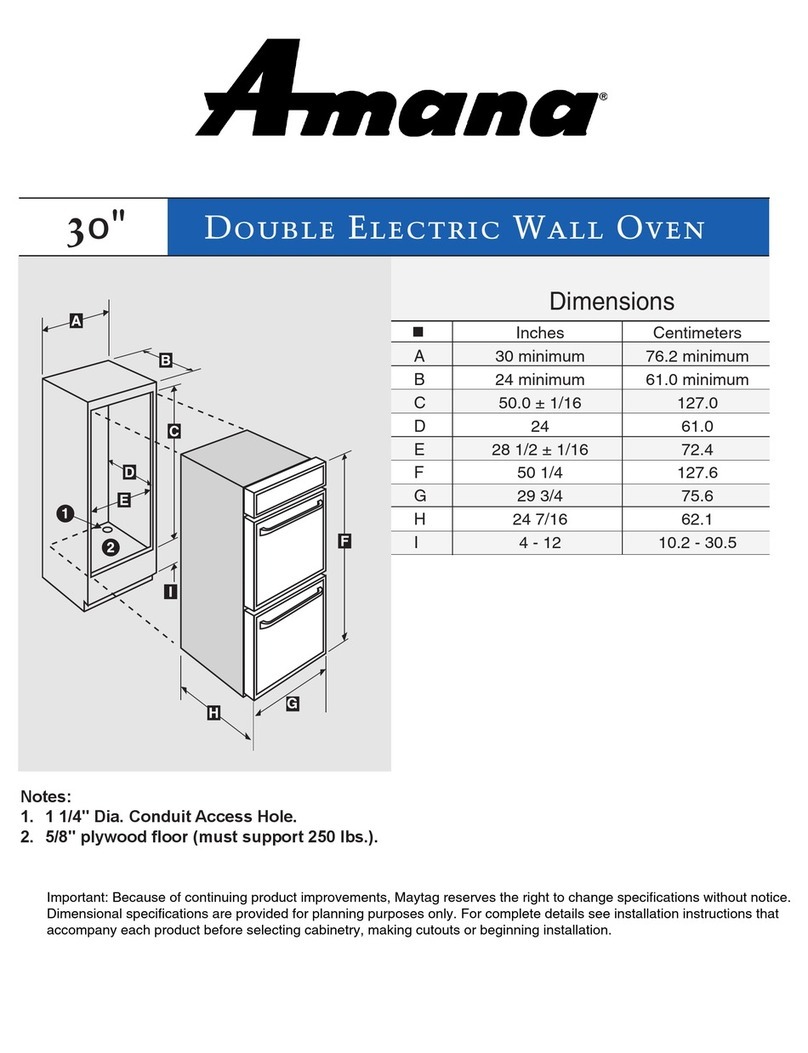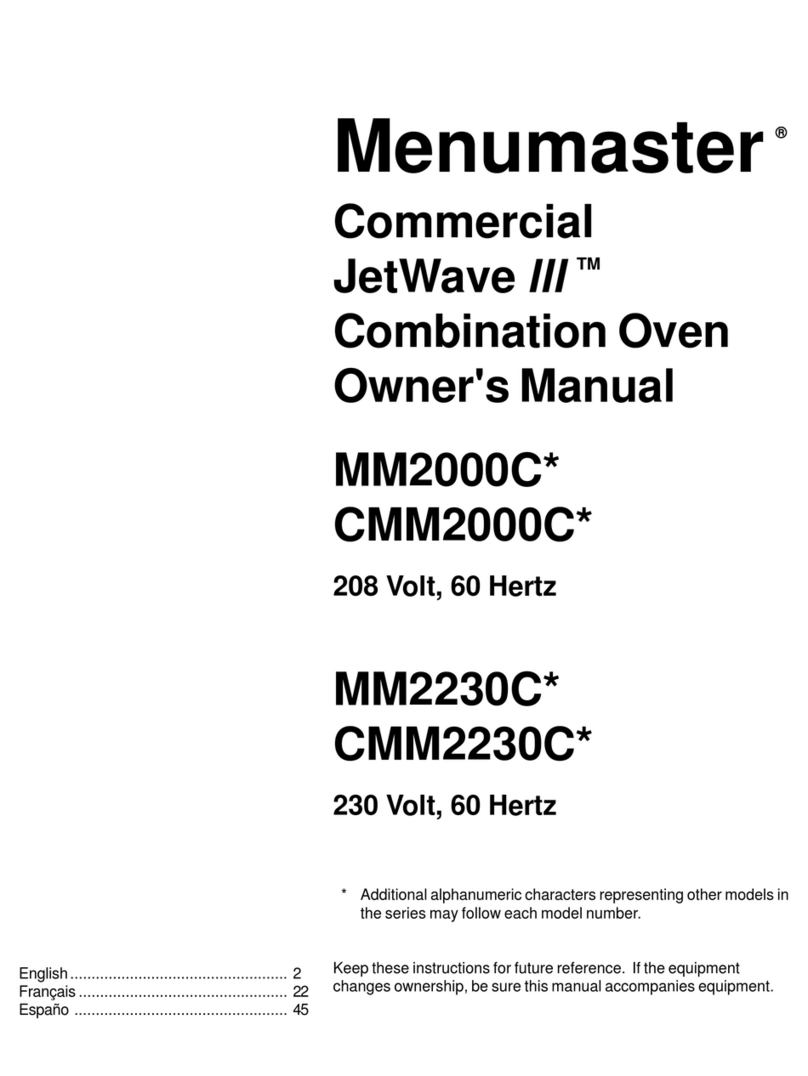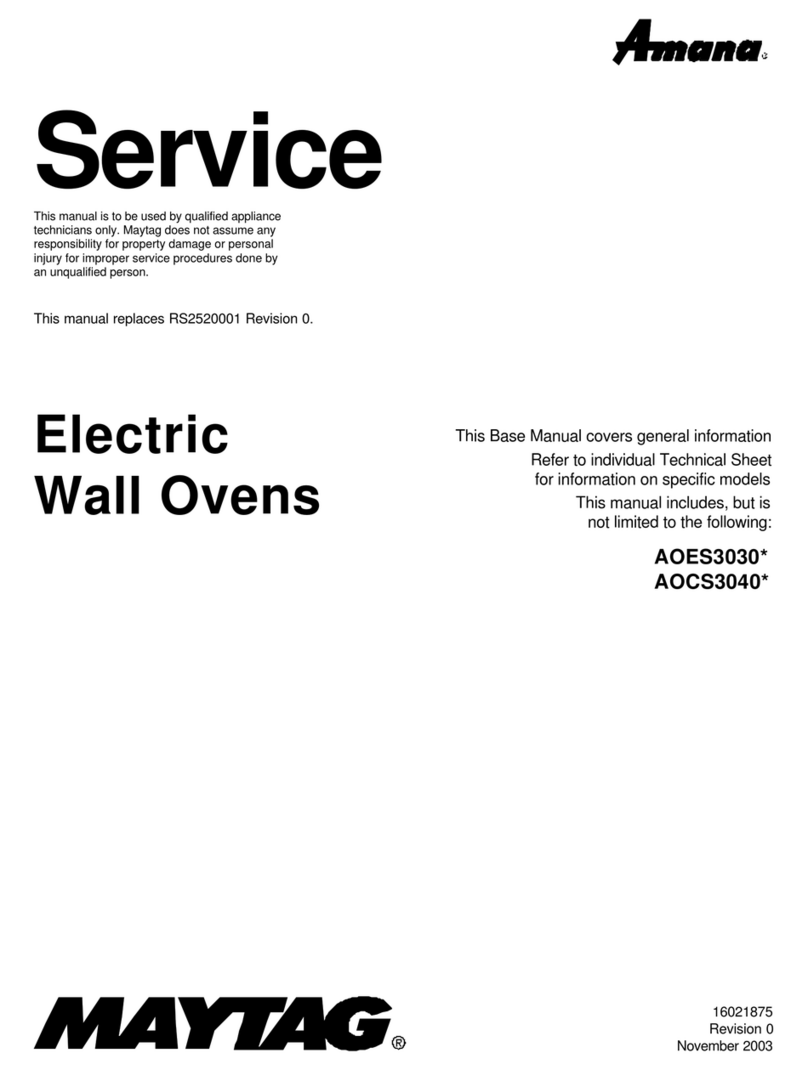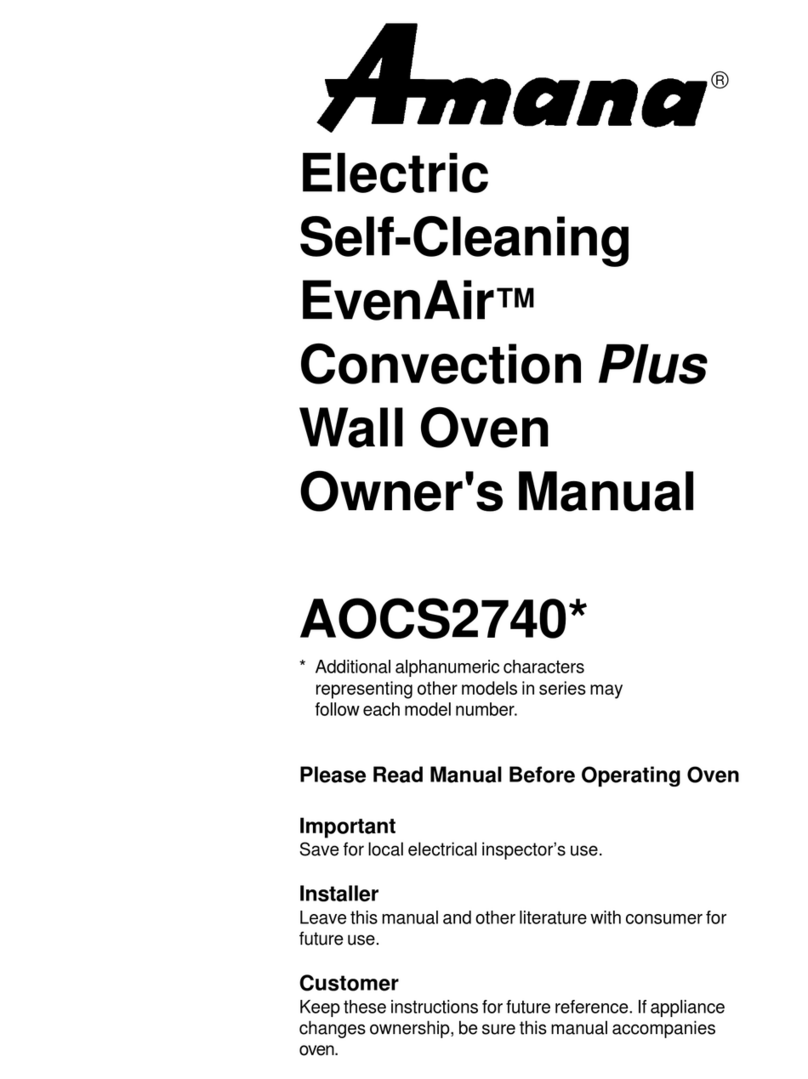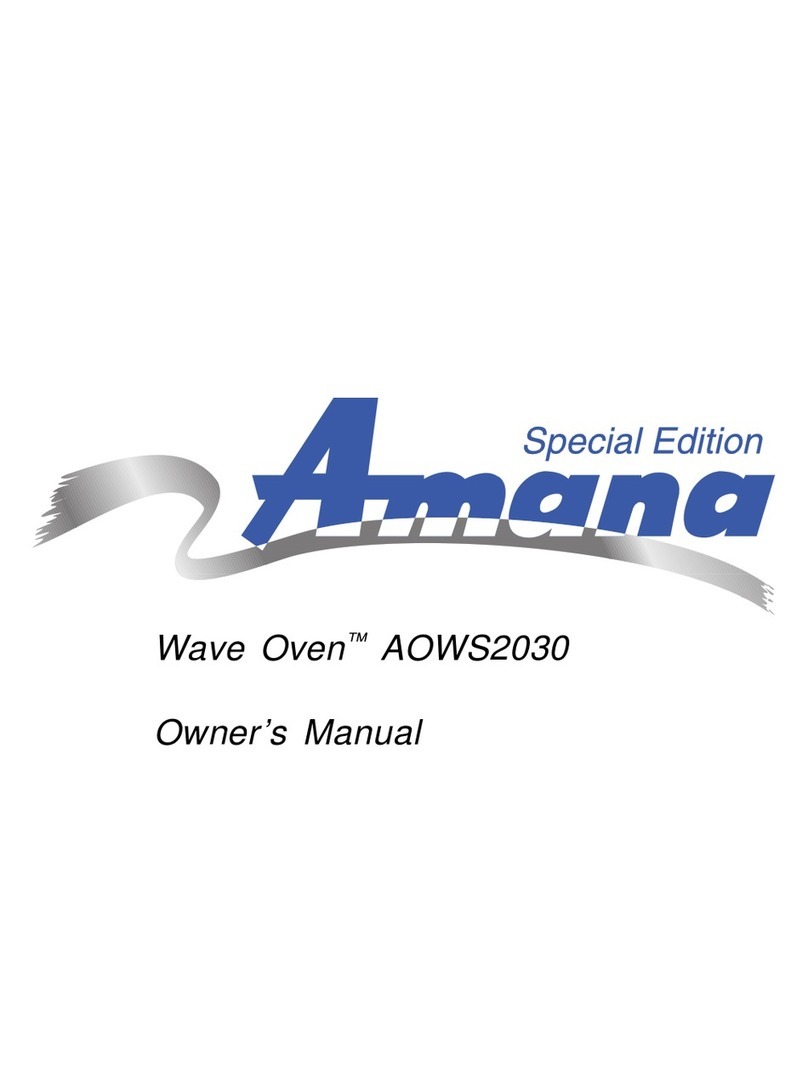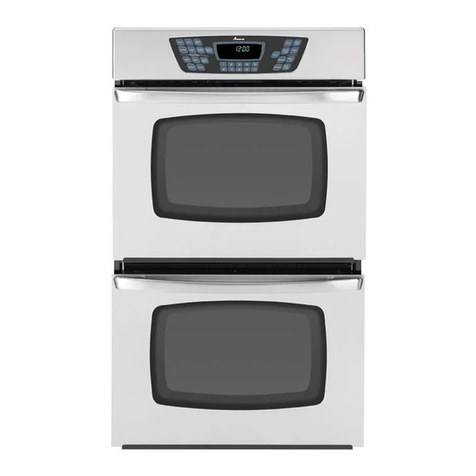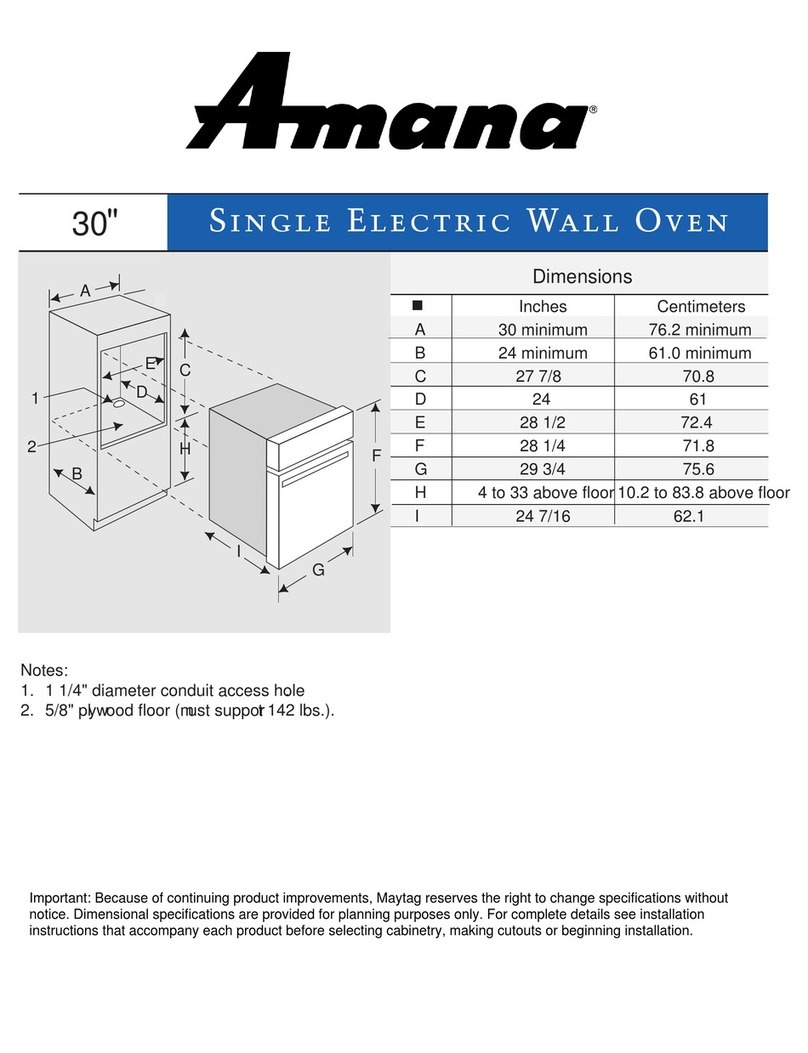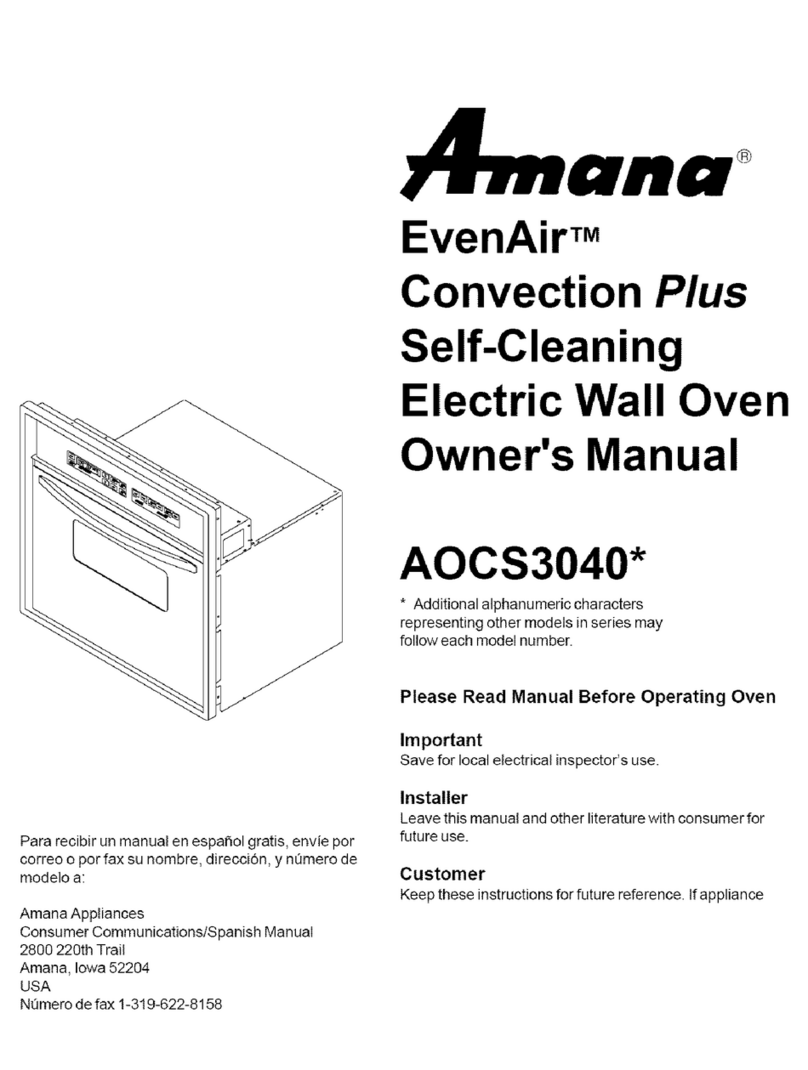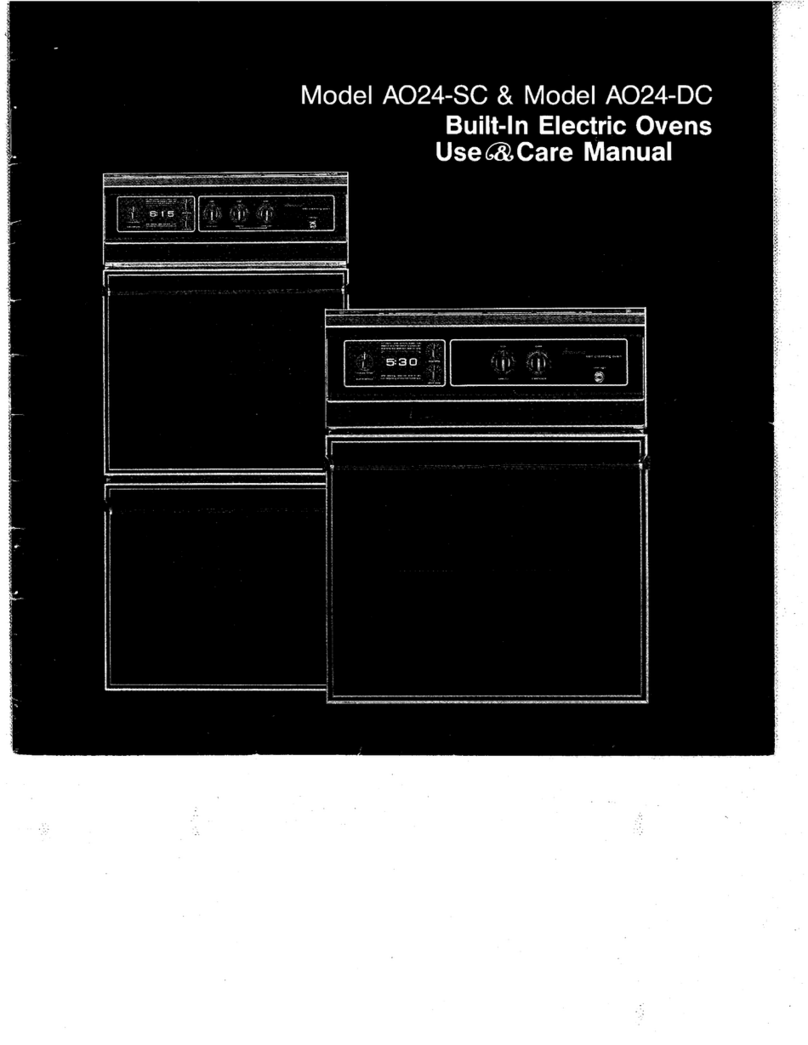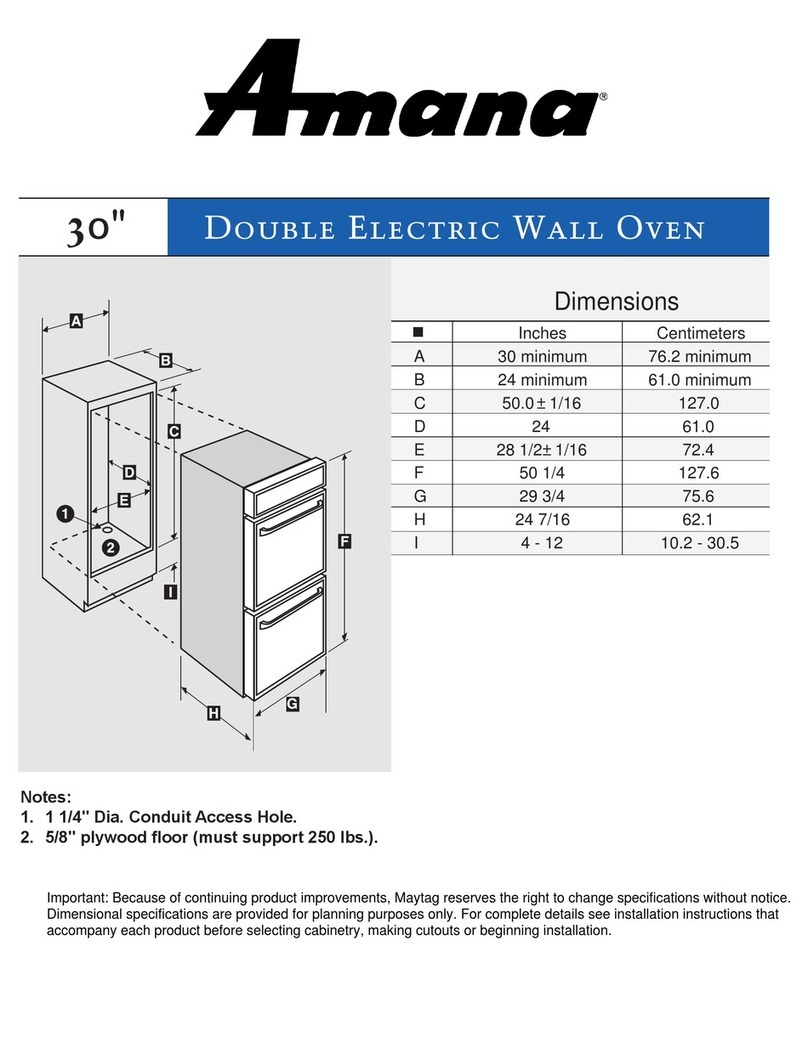
5RS2320006 Rev.0
Important Safety Information
SURFACE COOKING UNITS
1. UseProper PanSize—Thisappliance isequipped with
oneor moresurface unitsof differentsize. Select
utensilshaving flat bottomslarge enoughto cover the
surfaceunit heating element.The useof undersized
utensils will expose a portion of the heating element to
direct contact and may result in ignition of clothing.
Properrelationship ofutensil toburner willalso
improveefficiency.
2. NeverLeaveSurfaceUnitsUnattended—Boilover
causes smoking and greasy spillovers that may
ignite.
3. MakeSure Reflector Pansor DripBowls Are In
Place—Absence of these pans or bowls during
cookingmay subject wiring or components
underneathto damage.
4. ProtectiveLiners—Do not usealuminum foilto line
ovenbottom. Improper installationof theseliners may
result in a risk of electrical shock or fire.
5. Glazed Cooking Utensils—Do not use glass, ceramic,
earthware,or otherglazed utensils.They candamage
smoothtop and can break due to sudden change in
temperature.
6. UtensilHandles ShouldbeTurned Inwardand Not
ExtendOver Adjacent SurfaceUnits—To reduce the
riskof burns,ignition offlammable materials,and
spillage due to unintentional contact with the utensil,
the handle of a utensil should be positioned so that it
isturned inward,and doesnot extendover adjacent
surface units.
7. DoNotSoakRemovableHeating Elements—Heating
elements should never be immersed in water.
OVENS
1. UseCare When OpeningDoor—Let hotair or steam
escapebeforeremovingorreplacing food.
2. DoNot Heat UnopenedFood Containers—Buildup of
pressure may cause container to burst and result in
injury.
3. KeepOven Vent DuctsUnobstructed.
4. Placementof Oven Racks—Always place ovenracks
in desired location while oven is cool. If rack is
removedwhile ovenis hot,do not letpotholder contact
hotheating element inoven.
VENTILATION HOODS
1. CleanVentilation HoodsFrequently—Grease should
notbe allowed toaccumulate onhood or filter.
2. Whenflamingfoodsunder hood,turnfanoff.The fan,if
operating,may spreadthe flame.
In Case of Fire
Fires can occur as a result of over cooking or excessive
grease.Though a fireis unlikely, if one occurs, proceed
as follows:
Surface Element Fire
1. Smotherthe firewith a nonflammablelid orbaking
soda, or use a Class ABC or BC extinguisher. Not
water. Not salt. Not flour.
2. As soon as it is safe to do so, turn the surface
controls to “OFF”.
OvenFires
1. Ifyou seesmoke fromyour oven,do notopen oven
door.
2. Turnovencontrolto “OFF”.
3. Asan added precaution,turn offpower at maincircuit
breaker or fuse box.
4. Turnonventtoremovesmoke.
5. Allow food or grease to burn itself out in oven. Do not
openovendoor.
6. Ifsmoke and firepersist, callfire department.
7. If there is any damage to components, call an
authorizedservicer beforeusing range.
Precautions
•Do not cook food directly on range top surface, always
use cookware.
•Do not mix household cleaning products. Chemical
mixtures may interact with objectionable or even
hazardous results.
•Do not put plastic items on warm cooking areas. They
may stick and melt.
•Do not slide rough objects across range top surface.
Scratching or metal marking can result.
•Do not leave fat heating unless you remain nearby. Fat
can ignite if overheated by spilling onto hot surfaces.
•Do not allow pots to boil dry as this can cause damage
to cooking surface and pan.
•Do not use range top surface as a cutting board.
•Do not use range for storage or as a display counter.
